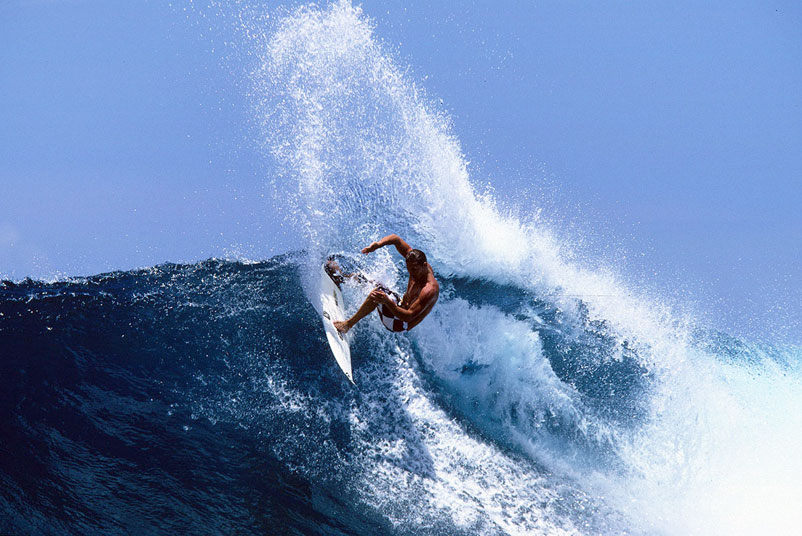Surf Journalism in the age of Kardashian, with Sean Doherty
Words by Morgan Williamson There’s a crux in the game of surf journalism, and it takes a different form than the average media outlet. Less controversy, more talking up the athletes. You don’t hear too much negative press. It’s all rainbows, long barrels and floaty aerials. Maybe a story here and there about that time […]
Words by Morgan Williamson
There’s a crux in the game of surf journalism, and it takes a different form than the average media outlet. Less controversy, more talking up the athletes. You don’t hear too much negative press. It’s all rainbows, long barrels and floaty aerials. Maybe a story here and there about that time Keala Kennelly got her face ripped off at Teahupoo. Something about a cartel encounter in Baja that ended in favour of our heroes. It makes me wonder what kind of meat is present in our art?
Sean Doherty’s the surf writer that you read if you’re a surf writer. His body of work speaks for itself and the man’s been at the forefront of this biz for a long time now; “Too long, I reckon” he says. “I started at Tracks in ’96, back in the stone age. We were printing on black and white newspaper. Long before the surf bubble started to blow up.” I wanted to know what he thought about journalism in surf: “As for actual journalism,” he begins, “I don’t think anyone goes into their jobs expecting to do real journalism. I don’t think there’s any real journalism actually done in surf magazines, really. It’s just guys trying avoid meaningful employment and increase their surf time.” It’s true, we don’t shine a light on personality flaws. Surfers don’t have paps chasing them into fatal car accidents. Very different to the scams and controversy so often brought to light in other professional sports.
“One story that was covered and probably wasn’t covered that deeply at all was Andy Irons’ death,” Sean tells us. “Everything that was written around that time posed more questions than were answered.” And if you don’t already know, Andy died of a drug-induced heart attack that still isn’t spoken about much.

As enigmatic in death as in life; AI, one of the greatest to ever do it. Indonesia, 2006. Photo: Tom Carey
But, it’s gotta be quite nice being a surf celebrity; bad press is rare. The worst is a meaningless berating from faceless screen names on this site. You’re known, but simply within the surf community. Mick Fanning recently became a more well-known surfer than Kelly Slater, and all it took was a shark attack during a live broadcast in the digital age. Not everyone can relate to the technical minutia of Mr Slater’s career, but everyone can relate to a fear of Jaws. And Steven Spielberg, not Reunion Island is to thank for that.
Prior to the internet, were people as critical of photos in magazines, or how pros dressed, who they dated, and the rest? The internet’s served up a perfect medium for humanity’s fabulous sickness! “The internet’s affected it, for better or worse,” Sean says. “For worse, it’s, y’know… killed it. (Print) Magazines are hanging on by their fingernails and most are essentially passion projects now. The upside is there’s a lot of different voices out there. The downside is you’ve got to wade through a lot of shit to get to some gold.”
Surfing was built on anti-establishment. The core has always loved the guy who stays up all night partying then goes out and kills his heat. But it’s an ideal that’s faded as the 80’s became 90’s, and 90’s became now. “Surfing’s days of being part of the ‘counter culture’ ended a long time ago,” Sean says. “Fuck, I don’t even know what it is these days. It’s gone beyond mainstream. I don’t know how you can even categorise it. You’ve got old guys trying to surf young, and young guys trying to surf old. It’s become this strange anarchistic soup. There’s sub-cultures within sub-cultures. There’s no longer any type of defined thing that says: surfers are this and surfers are that. That just isn’t true, they’re all sorts of things and I think it’s great that categorisation has been alleviated. Categorising in that effect is lazy. Everyone’s doing their own thing, which I enjoy, it makes it more fun to write about.”

Dane Reynolds, one of the surf media’s greatest hits. San Fran sling. Photo: Tom Carey
Scare tactics are abundant in the mainstream news: Storm Watch, Child Abduction, Serial Killer on the loose, targeting yellow houses near the freeway… time to move. The more eccentric, the better. But for us it’s awesome, lighthearted bullshit. Who can win Chopes next week? Look, Mr Slater’s got a new clothing line! Oh, and how much we do love sustainability. Hiroto Ohhara wants to buy some cars, (laughs, etc). Is John John Florence the best surfer in the world? Dane? Who does the best airs? Filipe Toledo is surely the Odd Future of Surfing… so where’s that leave Yago Dora? Sharks! Cue: Clickbait mania. And who are we are really writing for? “Essentially surfing’s a visual medium and to actually write about it meaningfully is fucking hard,” Mr Doherty tells me. “If you want a serious journalism career, like exposing the truth, you go work for the New York Times. But if you want to cruise, have fun, catch some waves and write about surfing, then you write about surfing. You’re not gonna turn the world on its head, that’s not the paradigm of surfing. The paradigm of surfing is to just go have fun. So that’s really what it’s all about. The bad news is that 20 years later, it’s not exactly wheel barrels full of gold. But, I’ve had a damn good time making a career out of it, and I’ll take that.”





Comments
Comments are a Stab Premium feature. Gotta join to talk shop.
Already a member? Sign In
Want to join? Sign Up